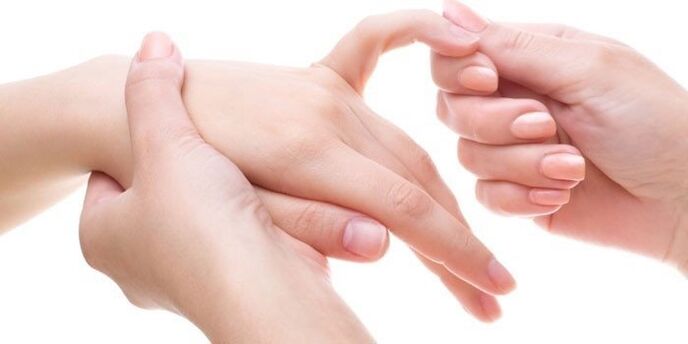
Hand joint pain not only interferes with normal life, reduces physical activity, leads to a decline in performance, but also makes the mental state worse due to the constant generation of uncomfortable aches and pains. .
That's why, when a person has pain in their knuckles, the first thing they care about is the cause of this phenomenon and how to treat it.
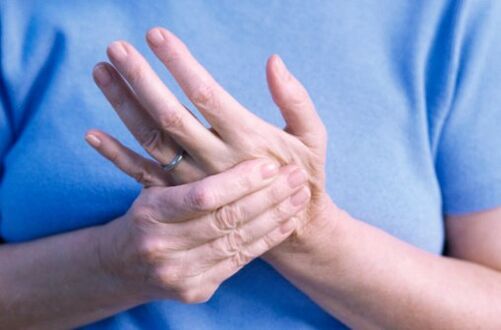
Cause of pain
Hand pain can be caused by many different diseases, many of which have similar symptoms.Most diseases are chronic, and the premises for their development often go unnoticed.Let's find out why the knuckles of one or both hands hurt.
Rheumatoid arthritis
Rheumatoid arthritis is a progressive connective tissue disease that affects the joints (mostly peripherally). Due to chronic inflammation of the synovial membrane, cartilage destruction occurs. Peripheral tissues are affected. Pathology develops due to autoimmune processes.The clinical picture is characterized by:
- destruction of cartilage tissue;
- Osteoporosis;
- pain, joint deformity (hand in first position), joint dislocation, spasticity;
- worsening of the vascular condition, damage to the lymph nodes;
- skin changes, nails, hyperpigmentation;
- the formation of specific rheumatic nodules;
- heart disorders (rheumatic heart disease);
- dystrophic changes in the muscles;
- various pathologies of the kidneys (most often amyloidosis), liver;
- functional disorders of the gastrointestinal tract;
- Neurological disorders, rheumatoid arthritis.
Illnesses can be caused by infection, hypothermia, trauma, physical or neurological stress.There is a genetic predisposition to the disease.Women get arthritis about 3 times more often.
The earliest and most important symptom is a feeling of generalized stiffness in the morning, especially felt in the joints of the hands, which disappears after physical activity. In the early stages, the general condition may be temporarily reduced, when the joints of the fingers and toes are cyclically painful, appetite decreases, heart rate increases, sweating, and low temperature appear.
Then the pain - mainly in the small joints of the hands and feet - increases, especially in the morning, after sleeping and when performing movements.Morning stiffness persists and becomes painful.Joint mobility is increasingly limited. Inflammation is markedly edematous, congestion appears, skin temperature rises above the site of inflammation, fever begins.
Rheumatoid arthritis is characterized by alternating periods of flare and remission, sometimes lasting - months and even years. With each exacerbation, the process includes new joints.
Bone tumor
Spinal osteoma leads to low back pain, neck pain, neurovascular disorders, formation of herniated discs, impaired blood flow in the vertebral arteries, nerve root compression, and signs of other symptoms. other neurological disorders. Usually, the disease is accompanied by numbness in the fingers, but the pain can be mistaken for pain in the joints.
Bone disease. Kienböck's disease
Pain in the fingers can be caused by osteonecrosis - necrosis of bone tissue due to increased mechanical stress, mainly in childhood and adolescence. In adults, the disease is diagnosed less often.The development of pathology is caused by trauma, functional overload, infection, rapid growth in children, structural features and sometimes vitamin imbalance.
One such disease is Kienböck's disease, which affects the wrist joint. This type of musculoskeletal disease is mainly characteristic of men aged 18 to 30 years with chronic micromuscular damage or overuse of the hands (lockers, lathes, carpenters, carpenters). Complicated symptoms include:
- persistent pain covering fingers or wrists;
- persistent swelling;
- pain increases when pressing on the wrist joint;
- bone destruction, bone loss in the final stage of the disease.
The process, as a rule, affects only one side.
Reactive arthritis
A recent infectious disease (1-1, 5 months ago) and subsequent development of arthritis may explain why the fingers on the hand are painful, especially when flexed. Reactive arthritis is probably the result of an immune response to microbial antigens located outside the joint, which causes the development of immune synovitis in the synovial membrane.
Symptoms of the disease are expressed:
- pain in the affected joints or tendons;
- worsening of the skin condition, changes in the nails;
- diseases of the genitourinary, cardiovascular and lymphatic systems.
The clinic for reactive arthritis is diverse and depends on the causative agent: streptococci, salmonella, meningococcal, shigella and many others.
Gout
Gout belongs to the group of metabolic arthritis - a disease in the musculoskeletal system caused by a metabolic disorder, in this case uric acid disease. The disease affects mainly men over the age of 40, however, gout is more likely to develop in young adults aged 20 to 30 years, in postmenopausal women.
Violation of purine metabolism can be caused by:
- increased synthesis due to an inherited genetic feature;
- CKD;
- certain blood diseases;
- are taking medication;
- consuming foods high in purines and fats (meat, fish), alcohol;
- infection;
- A combination of different factors affects uric acid metabolism.
This disease is accompanied by the development of hyperuricemia - an excess of uric acid in the blood serum, which leads to the deposition of urate in the tissues of the joints.
Gout is characterized by an attack-like course with increasing numbers of joints and tendons involved in the process, the gradual emergence of persistent, hard visible deformities. joints, osteoarthritis and the formation of tophi (gout nodes).
Symptomatic exacerbations of inflammation are manifested:
- sharp pain, often at night;
- joint swelling, congestion;
- weakness, fever, chills;
- increased stress;
- stool disorders.
Localization of gouty arthritis in the small joints of the hand is atypical. However, gout could be a very possible explanation for why finger joints hurt.
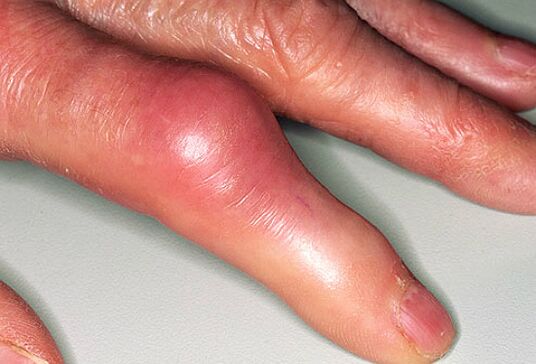
Psoriatic arthritis
Patients with psoriasis often develop chronic inflammation - psoriatic arthritis, the classic form of which is thought to affect the joints of the hands and feet. The disease often develops inconspicuously, with a gradual increase in symptoms, although an acute onset is sometimes possible.You can suspect that you are developing arthritis by the following signs:
- finger joints, feet pain in the morning or all day;
- there is swelling and pain;
- the skin over the joints becomes cyanotic;
- Nutritional changes occur.
The failure of the joints in the future becomes the cause of deformities of the fingers, shrinkage, which leads to the development of chronic bursitis, arthritis.
Extra-articular rheumatism
Extra-articular rheumatism as a disease of the peristaltic soft tissues often leads to pain in the fingers. Key factors in development are trauma, prolonged stereotyped movements, hypothermia, wetness, infection, and often lack of nutrition and blood supply.Pain can be caused by:
- tendinitis - a degenerative lesion of the tendon;
- tendinitis (otherwise - tendonitis, tendonitis) - inflammation of the middle part of the tendon, the inner lining of the vagina, extraarticular ligaments;
- Bursitis - an inflammatory process in the bursa, usually due to inflammation of the tendon sheath.
In the hand, the tendons of the wrist and hand are most commonly affected, which is related to their near-constant functional stress.Most often, the reason why the fingers on the hand are painful over the entire surface or in the joints are syndromes caused by:
- de Quervain's disease - tendinitis of the tendons of the muscle responsible for abduction and extension of the thumb;
- carpal tunnel syndrome - inflammation of the tendons of the flexor muscles of the fingers, often combined with carpal tunnel syndrome - pressure on the palmar ligament of the nerve and artery ulcer;
- wrist tendonitis;
- Knott's disease ("snap" of the fingers), which affects the tendons of the superficial flexors of the fingers and their sheaths;
- bursitis (tendinitis).
Wounds often arise or increase with movement, disturbed at night.There may be swelling, stiffness, and sensory disturbances.
Osteoarthritis
Degenerative-dystrophic processes in articular cartilage with the formation of bone-forming substances - osteoporosis - are the most common variant of arthropathy, the frequency of which increases with age. It occurs due to two reasons: increased mechanical impact on joints and cartilage degeneration.
Injury to the joints of the hand resulting in pain in the fingers or the entire palm, at first only when bending over, with considerable exertion, then even at rest, in the morning, sometimes at night.In addition, the disease is accompanied by:
- hardness, contract;
- joint deformity;
- sometimes hot swelling.
Osteoarthritis is characterized by a long-term course with a gradual increase in symptoms, often without exacerbations. The main types of disease affecting the hands are osteoarthritis of the intercostal joints and wrist joints.
%20and%20affected%20by%20osteoarthritis%20(right).jpg)
Systemic lupus erythematosus
It is an autoimmune multi-pigmentation disease with a chronic course, generalized vascular damage, and changes in connective tissue. It mainly affects adolescent girls and young women in their 20s and 30s.
The development of the disease may be unrecognized and acute, sudden. Gradual onset occurs on the basis of weakness, weight loss, subthreshold temperature, signs of arthritis (bursitis), minor skin manifestations. Sharp pain - characterized by severe pain in the joints, fever and a bright rash on the skin.In addition, the disease may be accompanied by:
- hair loss, nail changes;
- sensitivity disorder;
- stomatitis;
- damage to the cardiovascular system, most often pericarditis;
- sometimes muscle atrophy (mainly of the hand), deformity of the joints of the fingers, wrists, ankles;
- lung pathologies (pneumonia, candidiasis, tuberculosis, etc. );
- kidney damage (lupus glomerulonephritis);
- vegetative and emotional disorders;
- intellectual impairment, hallucinations, convulsions.
Arthritis is the most common symptom of systemic lupus erythematosus.
That is why the appearance of erythema and discomfort from a painful knuckle (especially if the cause of the pain lies in the force generated when the hand is squeezed) is the basis for this examination.
Diagnose
Since pain in the joints of the hand can be caused by a variety of disorders, it is important to determine the exact reason why the fingers are stiff, swollen, and/or painful.Diagnosis is made using the following studies:
- X-ray;
- Scanning;
- ultrasound examination;
- magnetic resonance or computed tomography;
- immunological testing;
- Laboratory analysis of blood, urine.
If necessary, in order to accurately diagnose the cause of finger joint pain, tissue biopsies are performed, joint fluid analysis is performed.
Treatments
It is not possible to independently determine what to do if the swelling is painful or the joints on the fingers are painful. The treatment is prescribed by the doctor individually after the diagnosis and examination.
Medical treatment
In case the finger on the hand (when flexing, flexing, resting) is excessively painful, it is advisable to allow pain medication for a short time before seeing a specialist.
Should not warm the joints, should not take anti-inflammatory and antibacterial agents in a rampant way.
You can use ointments to relieve acute pain in the joints of the fingers.
Further treatment depends on the disease and is often complex.Treatment is directed at:
- to relieve exacerbations with drugs, relieve pain with analgesics, anti-inflammatory ointments, gels;
- on the normalization of metabolic processes, immunity;
- to restore blood supply, improve joint nutrition, increase its function.
Treatment of developed syndromes against the background of the underlying pathology is carried out. Dialysis procedures are used: plasmapheresis, blood absorption. In severe cases, surgery is required.
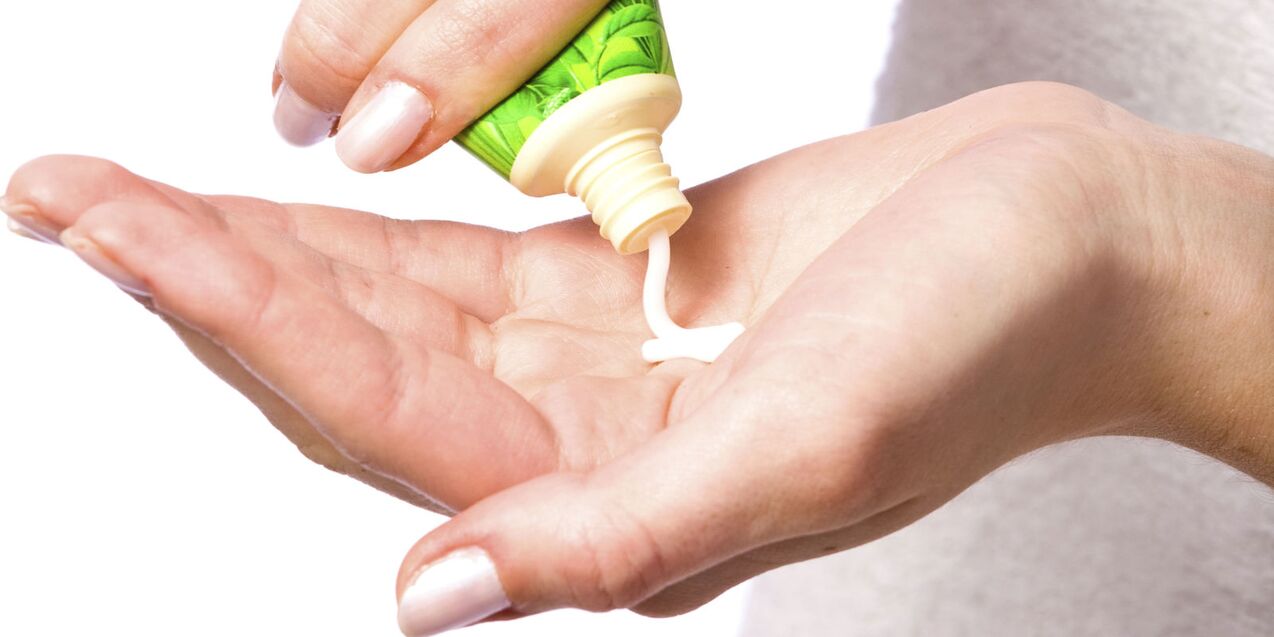
Physical therapy
If the exact reason is that the knuckles are painful, the main treatment will be supplemented by various physiotherapeutic procedures and balancing methods of therapy: electrophoresis, application of mud, amplipulse therapy and other methods.
Physiotherapy improves metabolism, normalizes blood circulation in the fingers.
Physical therapy
Basic therapy necessarily includes dismantling the joint, however, it is necessary to restore range of motion. To correct dyskinesia of the fingers on the hand, gymnastics is performed using a variety of compressions, pinching, abduction, stretching, allowing you to return to mobility for thejoint and sensitivity of terminal phalanges. Joint pain occurring in the fingers requires careful introduction of new exercises and a gradual increase in the load.
Massage courses
Therapeutic massage improves the nutritional status of tissues, which helps to alleviate the symptoms of the disease.However, with pain in the joints of the fingers, there are often contraindications to massage, so it should only be treated with the permission of a doctor.
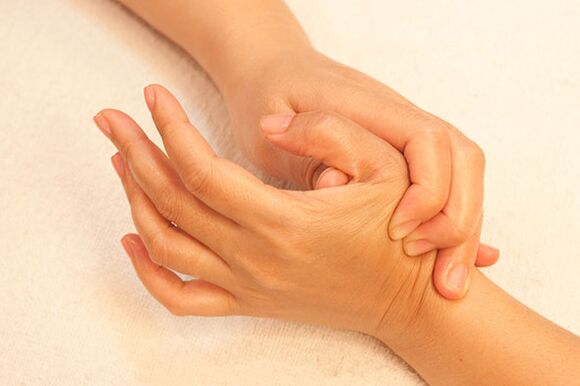
Folk remedies
Poultices, compresses, rubs, prepared according to folk recipes, can be useful when there are no contraindications and when drug therapy is not refused. They help alleviate the condition if the fingers on the hand are painful too much and for a long time.














































